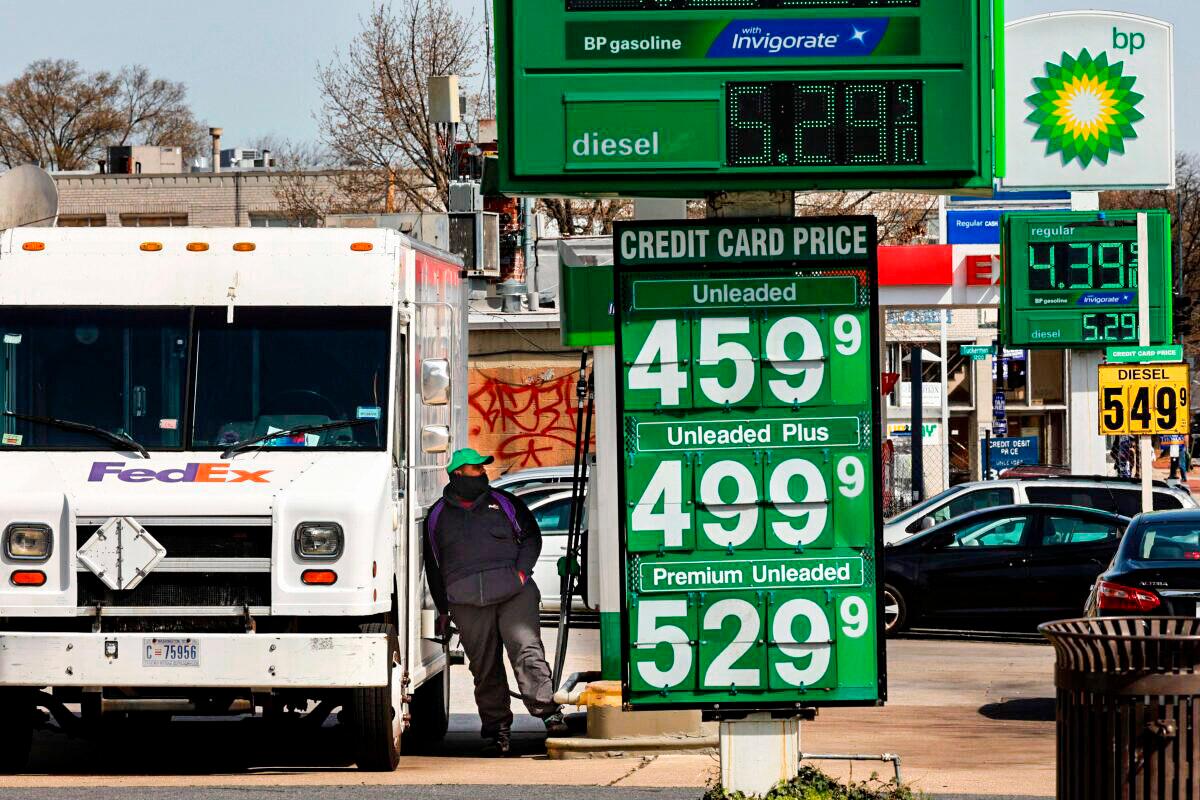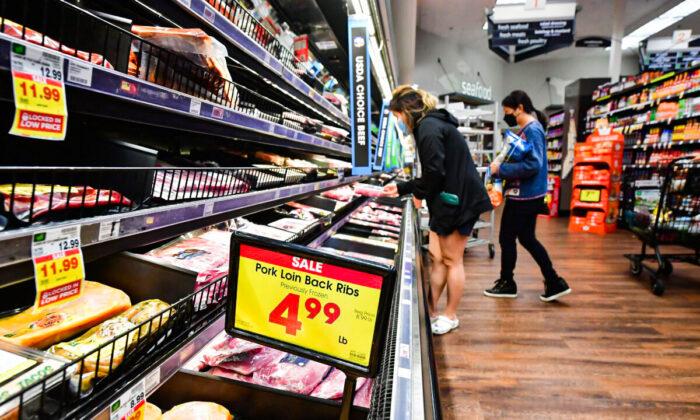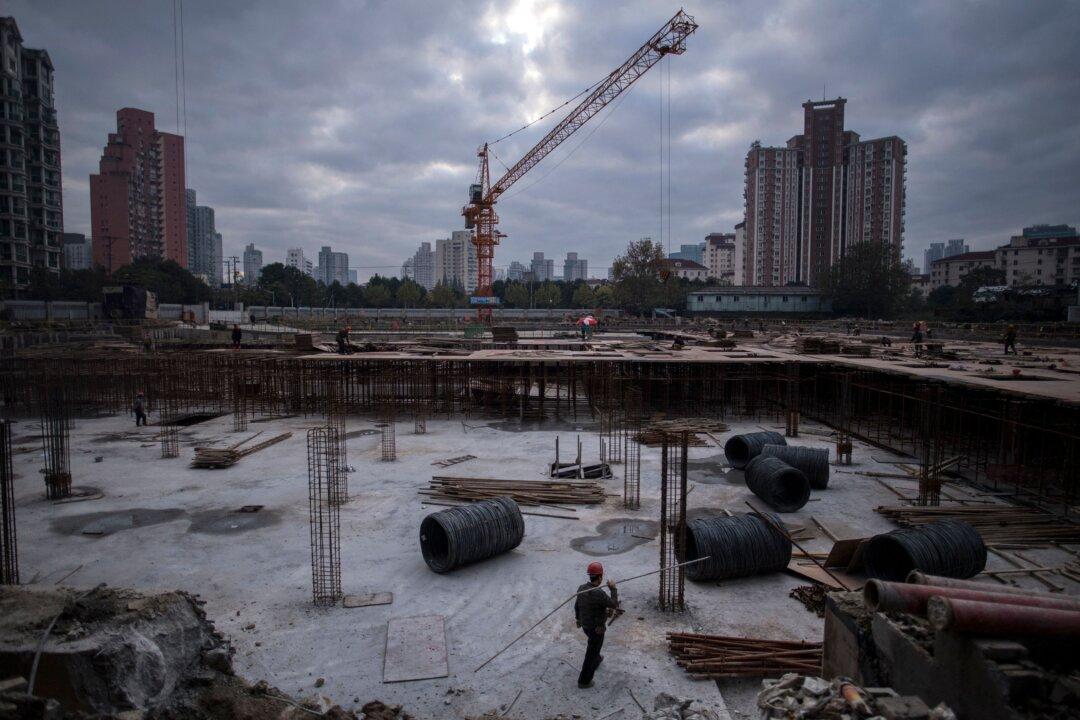Inflation has become the number one economic issue of the day and will weigh heavily in the coming midterm elections.
All available polls show both the extent of voter concern and that they hold the White House and congressional leadership responsible. Neither the inflation nor voter attitudes will likely change by November, for today’s price pressures are far from transitory and instead have deep fundamental roots.
That the nation faces a severe and ongoing inflation problem is now incontestable. The most recent consumer price index (CPI) for March showed an 8.5 percent rise in the cost of living during the last 12 months. That is a rate not seen in this country in over 40 years.
Perhaps more concerning, the price pressure seems to be gaining momentum. A year ago, this important measure showed a 4.2 percent rise in the cost of living over the prior 12 months. By June 2021, that measure had risen to 5.3 percent, and by December, it had risen to 7.1 percent.
All other inflation gauges show the same building pressure. The Institute of Supply Management (ISM) announced that in March, its index of costs to businesses had increased to 87.1, well above the 50.0 that marks the difference between increase and decrease. These increased business costs will pass through to consumer prices in the coming months.
It is little wonder then that polling shows high levels of public concern. A recent Quinnipiac University poll showed inflation as the biggest single issue on the minds of potential voters, far beyond immigration and COVID-19, which took distant second and third place on voters’ lists.

A division according to political affiliation showed greater agreement among Republicans and independents than either group had with Democrats. Some 36 percent of Republicans put inflation as their top concern, and some 32 percent of independents picked inflation, in both cases, far higher than any other issue. Among Democrats, inflation was a major concern but came in behind climate change.
Other polls tell a similar story, and the political ramifications are clear. A recent CNN poll shows inflation as a primary mover in the 58 percent of respondents who disapprove of the job President Joe Biden is doing. Inflation also featured in that poll’s finding that voters prefer anti-Biden congressional candidates by a margin of 42 percent to 32 percent.
Contrary to Washington’s various claims, today’s inflation and the concerns associated with it will almost certainly persist. To be sure, post-pandemic supply chain problems have contributed to price pressures, as have the consequences of Russia’s invasion of Ukraine, and these may lift by November.
But the nation’s inflation problem has deeper and more fundamental roots. It reflects years in which Washington—under both Republicans and Democrats—ran historically large budget deficits. The Federal Reserve (Fed) facilitated this deficit spending by increasing the circulation of money in the economy.
Since 2010, the Fed has bought some $5 trillion in government debt outright, some $3 trillion in just the past couple of years. This policy mix in which the Fed finances the government with the modern equivalent of printing paper money is a classic prescription for inflation.
These destructive practices actually go back to the financial crisis of 2008-09 and the ensuing great recession. In the teeth of the crisis, the Fed understandably drove down interest rates and poured liquidity into financial markets. At the same time, the Obama administration tried to deal with the recession by increasing deficit spending. Though such policies were perfectly justifiable in the circumstance, both the administration and the Fed, contrary to past practice, kept them in place even as the economy recovered.
It was not until 2014, fully five years into the economy’s recovery, that policy began to moderate and then only very gradually. The Trump administration continued to use extensive deficit financing as has Biden, first to deal with the pandemic but in other ways as well.
After what turned out to be a brief period of policy correction, the Fed, too, after a very brief period of monetary restraint, returned to zero interest rates and aggressive money creation in 2019, even before the pandemic, and continued those practices until just a few weeks ago.
Though much of this inflationary policy mismanagement predates Biden and the present Congress, voters still hold them accountable. Part of this is the typical pattern that always blames those in power for bad news. But there is more reason than that to hold this White House and this Congress at fault.
Biden, on taking office, shut down the Keystone XL pipeline that would have brought Canadian oil to the U.S. market. Since then, this administration has done all it can to discourage conventional drilling and fracking for oil and natural gas. Fossil fuel production in the United States has dropped some 10 percent from 2019 levels. The country has gone from being an energy exporter to an energy importer.

This pattern may suit environmental objectives, but there also can be little doubt that these fossil fuel supplies, had they still existed, would have blunted the energy price hikes that have led to the general inflationary push, both before and after the Russian invasion of Ukraine.
Most egregious of all is how the White House and the Fed frittered away the past year or more when they should have been addressing building inflationary pressures. As prices accelerated, policymakers ignored them and refused to consider a course correction.
With the enthusiastic support of his party in Congress, Biden continued to seek ways to enlarge federal spending and deficits. The Fed continued to hold interest rates low and directly buy federal debt.
When questioned about inflation, Fed Chairman Jerome Powell dismissed the matter, saying that the problem was “transitory.” Treasury Secretary Janet Yellen echoed that claim, as did Biden as late as last summer. All blamed the inflation first on supply chain problems that they claimed would lift soon and afterward on Vladimir Putin’s war. It was only a few months ago that the Fed “retired” the word “transitory” and began to rethink policy. The White House continues to blame Putin.
This neglect has done worse than just give anti-inflation policy a late start. Because the authorities failed to act in the face of intensifying price pressures, public confidence has ebbed, and an inflationary psychology has begun to develop. People and businesses now expect inflation to persist. Workers seek wage hikes to cope with anticipated increases in the cost of living and businesses grant them, assuring themselves that they will have no trouble passing the added costs on to consumers through higher prices.
As the history of the great inflation in the 1970s and 1980s shows, such inflation expectations can sustain price pressure even if, in time, a policy can reverse the damage done in the past. This wasted year may not yet have created inflation expectations at the level that existed in the 1980s. Still, it has created enough of this psychology to make it that much harder to bring today’s inflation under control.
Those in power today may not have created the underlying inflationary pressure. The blame there goes back for more than a decade. However, today’s administration and Fed have contributed to those inflationary pressures with their neglect of the nation’s energy needs, with the decision to continue easy monetary policies, and especially with the drive to enlarge federal spending and deficits. What’s worse is their feckless response to clear evidence of price pressure during the past year or more, which has ensured that an already difficult problem is now even less tractable than it might have been otherwise.





